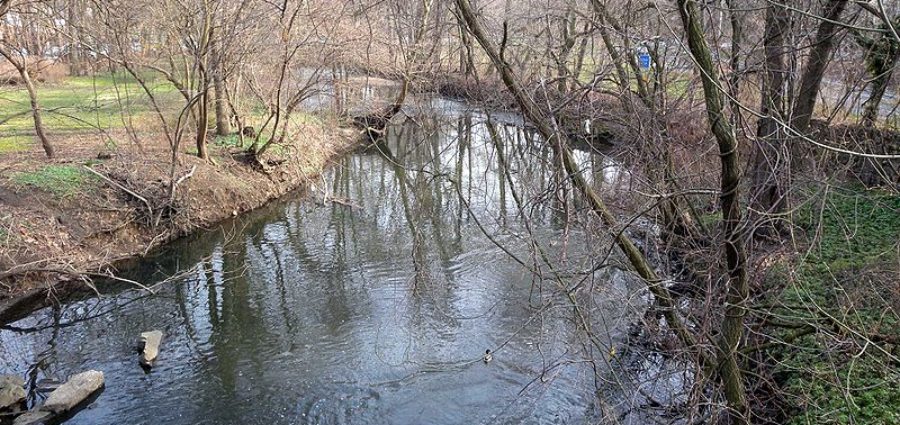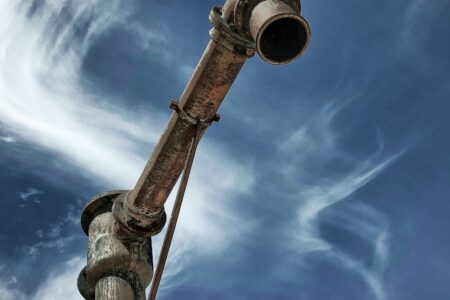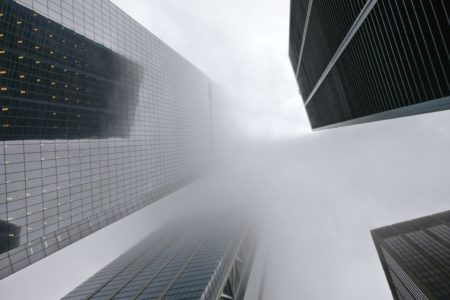We spend a lot of time talking about river restoration, river clean up. But how exactly does a river get dirty. It must be different for every stream out there, but following the life story of the Bronx River may be a at least a good example.
Prior to the building of the first dam at 182nd Street in perhaps the 1680s, the river was used mainly for transport, fishing and hunting. There was virtually no permanent settlement. Native American groups may have lived and fished along the river, but their numbers were quite small. Though they may have dumped waste in the river, it is unlikely that the amount would have had much of an effect on the health of the river. Also, the stream of the river would have been much greater than it is today and would have carried the waste away quite rapidly.
The first settlements in the Bronx began to the east on what today is the Westchester Creek and the neighborhood of Westchester Square. The history of that waterbody, today in a very truncated form, would be an in depth study in pollution. Along the Bronx River, the settlement began in what is today named West Farms. As explained by Eric Sanderson, this area would have been primary since it is at the top of the tidally affected area and would have provided a fordable passage at low tide. The actual name of West Farms originally referred to the whole area west of the Bronx River from Fordham down to and including what we call Hunts Point today. The area is West of the river and west of the town of Westchester. With the building of the first permanent homes, simple canals would have been built to take storm water to the river. It wouldn’t be for over a hundred years that the canals would also carry human waste.
The dam at 182nd Street, first built in the 1680s, would have had an immediate affect on the health of the river. The dam, as do all such structures, slows the flow of water especially in the lower parts of the water column, allowing sediments to settle out. The piling up of sediments would have begun to smother any benthic life in that area. As well, the restriction of fish passage must have affected the ecosystems as a whole. Anadromous fish such as the alewife serve a variety of purposes including transferring the energy from the marine environment into the freshwater in terms of their eggs (thousands of which would be eaten by other organisms) and, in some cases the depositing of their own carcasses once they leave this mortal coil. Perhaps more importantly, the alewife would have carried with them the eggs of the alewife floater, a freshwater mussel. Mussels are an important food source, and, as bivalves, filter the water in which they live. Their elimination along with the stagnation of the water flow would mean an eco system change and, in effect, pollution.
Those first mills, I believe a grist mill and a saw mill, could be considered fairly neutral in their direct effect on river health. I cannot find any studies that speak of the effect of sawdust on river systems, and the flour ground would have been, to the greatest extent possible, bagged and carried off. However, as successful industries invite customers and then more industries, therein lies the greatest culpability to pollution.
Judging from the maps that are available of the lower Bronx River and what can be seen in the river today, there have been a minimum of 6 dams or diversions in the final 8 miles of the river. This does not include the other industries that used the water for their purposes without dams. There probably would have been many more if it were not for a couple of facts.
One is ownership. From 182nd Street to Fordham Road has always been in the hands of one owner, as was the land from Fordham Road north to just above Allerton Avenue. Control of this land meant that the numbers of access points was (still is) limited. The other is geography. Some say that the dam at 182nd street was originally constructed over an existing area of falling water and the land does shoe that possibility, as does the area of the Bolton dams. The area of the snuff mill ran through a unique geographic phenomena, possibly caused by earthquakes some 10,000 years ago. That area definitely lent itself to a damming and diverging project. Just to the north, however, the land lies flat and wide. The area from just above Allerton north to approximately 230th Street offers no high ground near the river, and for most of its history the river has chosen and rechosen its course at will in that area, creating oxbows and wetland environments, islands and ponds. Here there was no environmental help in the creation of a dam and so none were built.
There eventually were a variety of mills and industries along the river, from sawmills and gristmills, to tanneries, bleaching mills and tapestry works. Each had a distinct effect upon the river depending upon how they used the river and what they returned to the river. Stephen Devillo tells an anecdote of the Bolton dye mills and how those downstream could tell what was the color of dye for the day; Take a look at the kids coming out of the river after taking a dip. If they were red, they were dying with blue. If the kids were red, they were dying red. Though I don not know of any other descriptions of the Bronx River, Engels, in The Condition of the Working Class in England, wrote of the river in his town as, “The purple waves of the narrow river flow sometimes swiftly, sometimes sluggishly between smoky factory buildings and yarn-strewn bleaching-yards…Its bright red colour, however, is due not to some bloody battle … but simply and solely to the numerous dye-works using Turkey red.”
Coloring of the water seems somewhat innocuous, that is, until you consider the chemical make up of the dyes. There were “azo dyes, such as Orange II (Colour Index Acid Orange 7), as well as textile softeners and finishing agents. Orange II, a dye for wool, was made by diazotization of sulfanilic acid, followed by coupling with beta-naphthol… as well as Sulphur Brown, Sulphur Green, and Sulphur Cutch dyes.” Names like that you don’t use to color eggs at home.
The secondary effect of industry is the need for workers in the mills and factories. Even areas that did not suffer directly from the mills and such had to deal with this effect. The village of Bronxdale ( today a park and part of the Bronx River Parkway)sprung up as a workers housing for the folks who worked at the Bolton Mills. Rapid population change almost certainly has negative effects, as can be noted in the description of Crumpsall in the UK. “Within the space of just fourteen years (1897-1911) the population of Cheetham and Crumpsall more than doubled from 26,000 to 60,000. House building boomed. Farmland disappeared, along with the “…wild flowers which grow in profusion…” the salmon in the River Irk, and “…the brook in which watercress grew…” The growth along the Bronx River may have been less dramatic, but the effects would be felt at any rate.
Though the river was referred to as an open sewer by at least one official from the Bronx River Valley Sewer Commission by the end of the 19th century, there were others that saw it differently. F. Hopkinson Smith recounts a visit to his favorite riverside hotel in 1892 in “A Day at Laguerre’s” (search on Google Books) as “as charming in its boat life as an old Holland canal; it is as delightful in its shore life as the Seine; and it is as picturesque and entrancing in its sylvan beauty as the most exquisite of English streams… As there is only the great bridge(Williams Bridge today Gun Hill,DG) above, which helps the country road across the little stream, and the little foot-bridge below, and as there is no path or road, all the houses fronting the water, the Bronx here is really the only highway, and so everybody must needs keep a boat. This is why the stream is crowded in the warm afternoons with all sorts of water crafts loaded with whole families, even to the babies, taking the air, or crossing from bank to bank in their daily pursuits.”
Any of the river folk mentioned above, had they lasted until about 1914, would have lost their lifestyle to the Bronx River Parkway.
While the bucolic description of the Bronx River life would also have contributed to its pollution, there is more than individuals to consider. Of course there were mills and factories to the north, including lace mills and, starting in 1893, the Baumgarten-Gobelin Tapestry Works (need to learn more about the upper reaches), but perhaps the flow of the river is an issue as well. A swiftly flowing river will carry much of what goes into it away at least from the immediate vicinity. Plumbers are careful to keep waste pipes at a steady angle to make sure that everything keeps moving away from its origin. Dams along the route tend to impeded or stop that flow. But in 1885 they built the first Kensico Dam in Valhalla, capturing Bronx River water and ostensibly reducing the flow. In 1905 the decision to raise the dam was made and its construction and completion between 1913 and 1917 reduced the flow as well. Is polluting only the adding of something detrimental? Can it be the removal of something essential?








